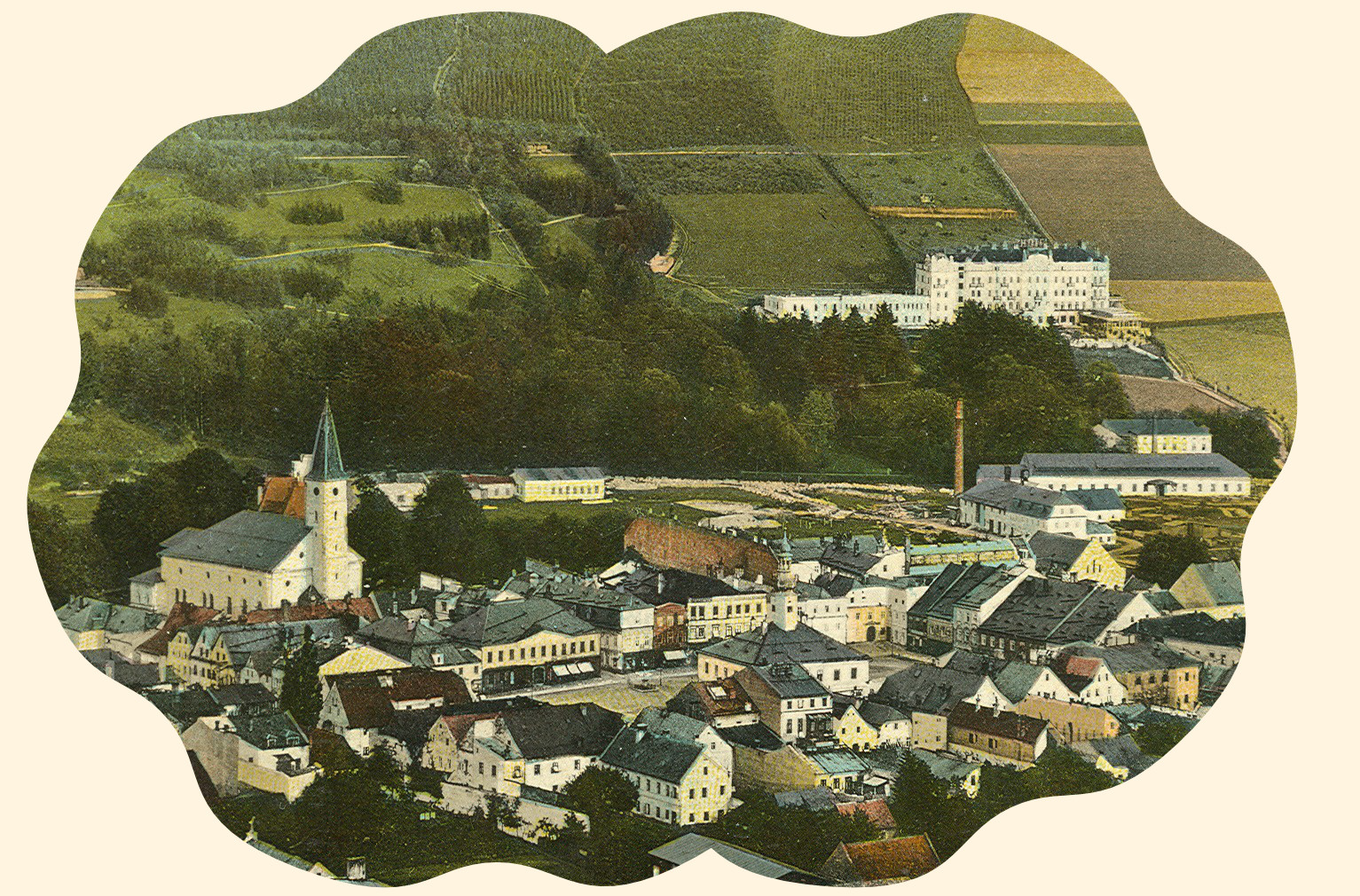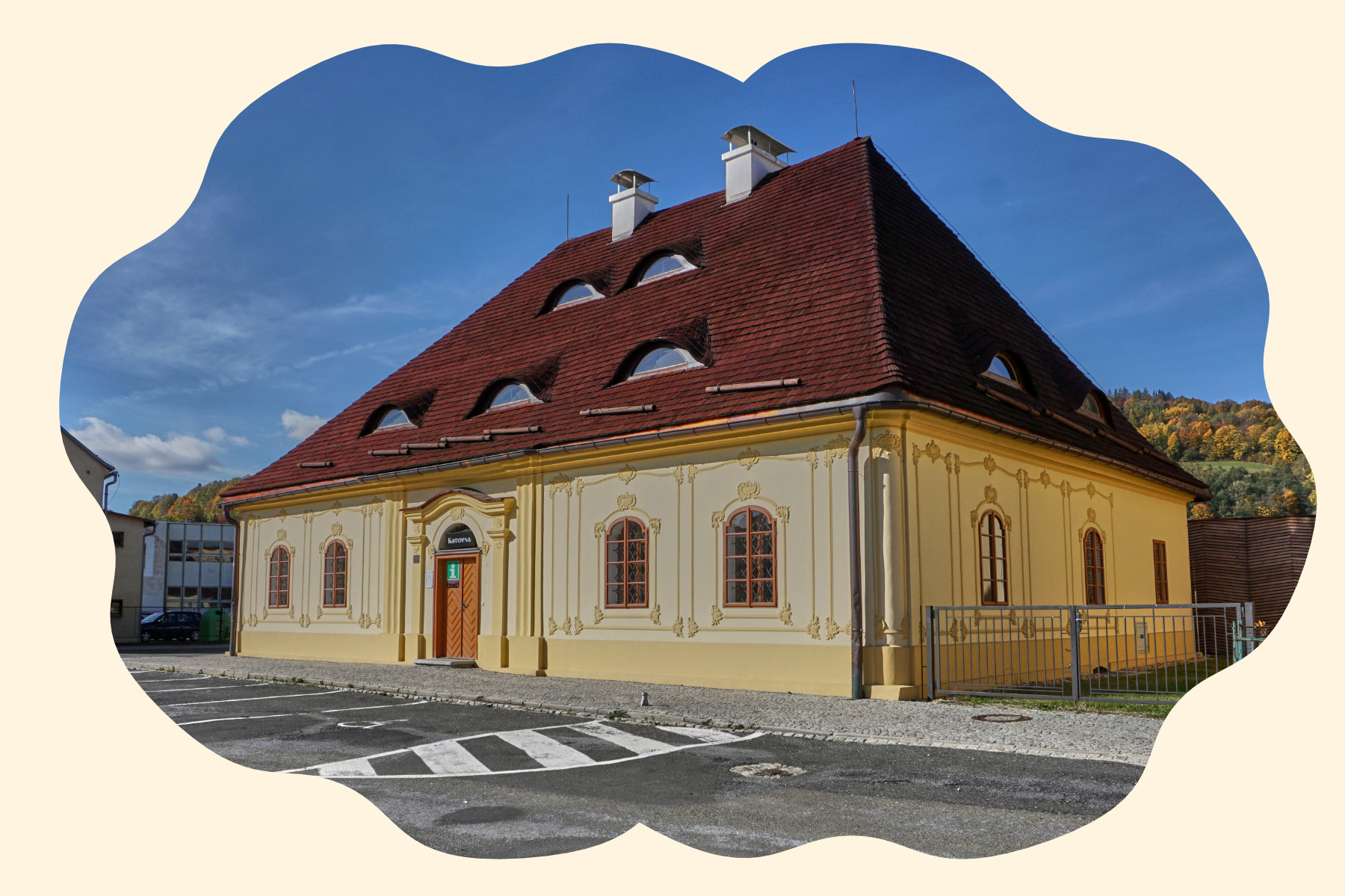Jesenik Town & Spa Guide
Jesenické toulky (Walks around Jeseník)
“One cannot stay in Jeseník without soon falling in love with it.”
(Adolf Kettner, 1892)
Two tourist circuits that will guide you around the sights and attractions of Jeseník and Priessnitz Spa Resort. You will learn a lot of information about the booming period of the spa and textile industry, but also about the dark period, when witch trials took place here. During your walk through the city, you will also get to know the recent history and learn something about the post-war development of the city.
Jeseník (German: Freiwaldau; from 1921 to 1947 Frývaldov) was dubbed the Pearl of the Jeseníky Mountains by its original German inhabitants. A spa town in the valley of the Bělá and Staříč Rivers, it lies at the foot of the Jeseníky Mountains and the Rychlebské hory (Golden Mountains). The first written mention of the town Vriwald dates back to 1267. The village here was granted town status around 1284. Jeseník was a mining town with all the privileges that this entailed, with gold and other metals mined in the vicinity for centuries. Later, its fame was also spread by the Gräfenberg spa resort (today’s Lázně Jeseník), which was associated with the renowned founder of hydrotherapy Vincenz Priessnitz (1799–1851). Starting in the 1830s, high society from across Europe would flock here. The town was also linked to the textile industry, controlled in particular by the local Raymann family and the Regenharts, who were originally from Vienna. The local water fortress was the seat of the Diocese of Wroclaw. Jeseník also has the regrettable distinction of being the town where Silesia’s infamous witch trials began in 1622. Jeseník rose to the fore among other towns in the region and became the seat of the political district in the middle of the 19th century.
Numerous important figures were born or based in Jeseník. These included the twins Edmund (1837–1917) and Adolf Gustav (1837–1894) Weiss. Edmund was an astronomer and mathematician, his brother a prominent botanist. Their father, Josef Weiss (1795–1847), promoted hydrotherapy in England. Local artists include the academic sculptor Paul Stadler (1875–1955), who was the headmaster of the school of stone-cutting in Supíkovice, the sculptor Engelbert Kaps (1888–1975), and the composer Carl Ditters von Dittersdorf (1739–1799).
The development of the town was violently interrupted during the Second World War, by the expultion of the German inhabitants. After the war, during the period of socialism the textile and mining and construction industries, led by the state enterprises Moravolen and Rudné doly Jeseník developed in particular. In the 1990s the town began to change its face, primarily in the field of tourism and spa industrie.
Welcome to a spa town in the healthy heart of blueish mountains and green forests with hundreds of life-giving clean water springs!
Enjoy your stay!
Bohumila Tinzová
Adress: Palackého 176/12, Jeseník 790 01
E-mail: ic@jesenik.czPhone: +420 584 453 693
Website: www.jesenik.cz
Facebook: @icjesenik
Instagram: jesenik_turista
© ZA Opava – SOkA Jeseník: reproduction of period photographs and postcards
Issued as part of the “Border Wandering projectů No. CZ.11.2.45/0.0/0.0/16_009/0002971, which was financed by the Praděd Euroregion Micro projects Fund.


